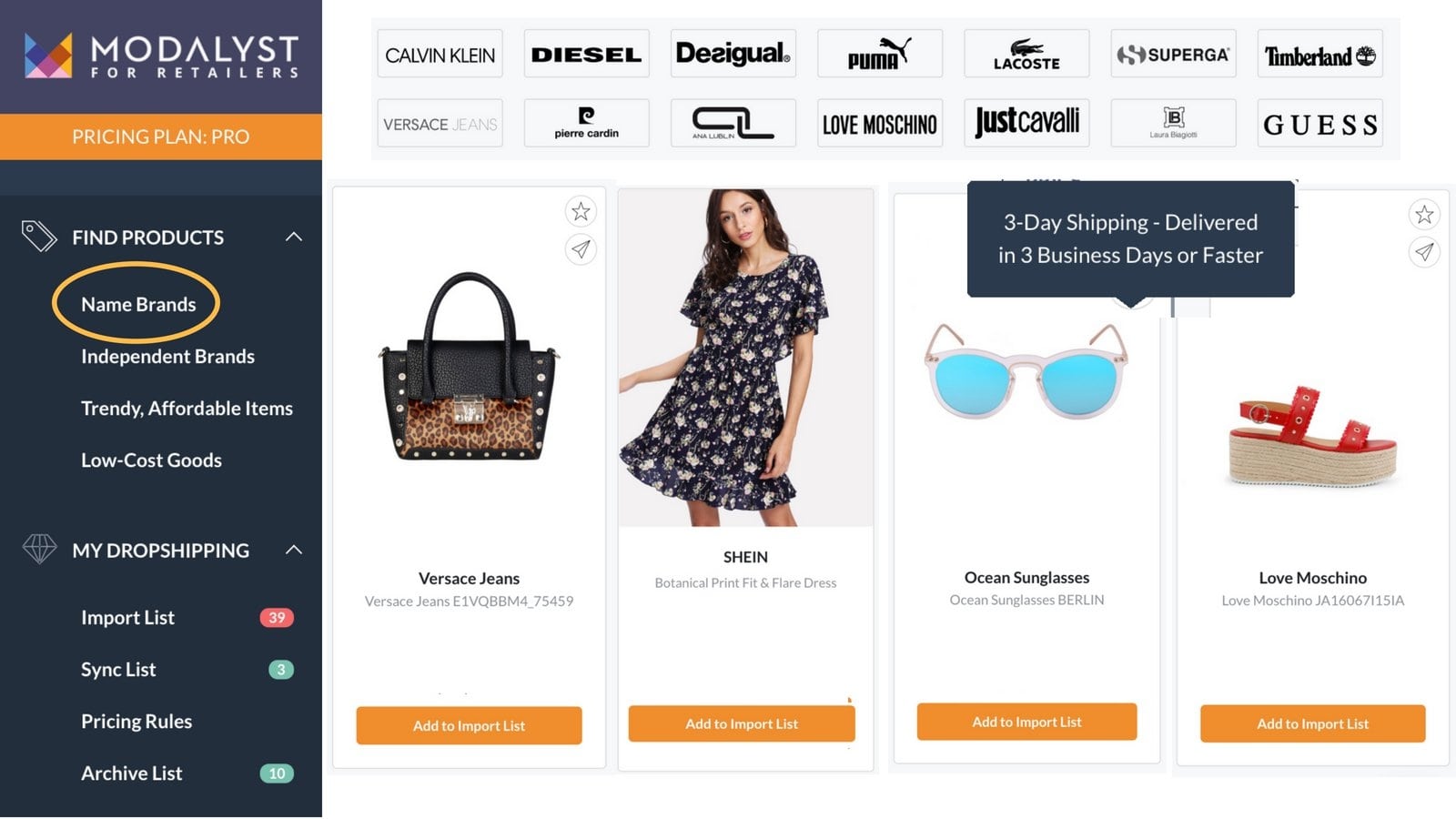
Modalyst: Complete Buyer's Guide
AI-powered dropshipping platform for fashion and print-on-demand
Modalyst is a specialized AI-powered dropshipping platform that has carved out a distinct niche in fashion and print-on-demand operations, serving primarily small to medium businesses with curated US and EU supplier networks. Unlike broad-market competitors, Modalyst focuses on quality over quantity, with 68% of its customer base consisting of businesses with 1-10 employees across fashion (42%), home decor (23%), and beauty (18%) categories[53][55].
Market Position & Maturity
Market Standing
Modalyst occupies a specialized niche position in the dropshipping market, focusing on fashion and print-on-demand operations rather than competing for broad market dominance. This positioning creates advantages for targeted use cases but limits addressable market compared to platform-agnostic competitors like AutoDS and DSers[52][53].
Company Maturity
Business maturity indicators suggest established operations with meaningful customer base, evidenced by 890 Shopify App Store reviews and documented customer implementations across multiple verticals[55][56].
Industry Recognition
Industry recognition appears limited compared to broader market competitors, with competitive analysis showing stronger positioning for AutoDS in electronics and Spocket in broader fashion categories[52][53].
Strategic Partnerships
Strategic partnerships focus primarily on ecommerce platform integrations, particularly Shopify and Wix, though the absence of native BigCommerce support and limited WooCommerce capabilities suggest partnership gaps that could impact market expansion[52].
Longevity Assessment
Long-term viability assessment shows mixed indicators, with established customer base and specialized market position providing stability, but pricing disadvantages and technical limitations creating competitive vulnerabilities that could impact sustained growth in an increasingly competitive market[52][54][56].
Proof of Capabilities
Customer Evidence
Customer implementation evidence demonstrates Modalyst's effectiveness in specific scenarios, with documented case studies showing measurable business outcomes. A fitness apparel microbrand achieved breakeven at $1,000 upfront investment through US supplier integration and branded invoicing capabilities, while a home decor retailer eliminated 80% of overselling issues through real-time inventory synchronization[55][56].
Quantified Outcomes
Quantified performance outcomes from customer implementations include 42% reduction in order processing time within 3 months and 65% reduction in customer service tickets through automated tracking capabilities[55]. A print-on-demand store achieved 30% margin increases with integrated design tools, demonstrating the platform's effectiveness for custom product operations[56].
Market Validation
Market validation appears through Shopify App Store ratings of 4.3/5 stars across 890 reviews, with automated tracking updates consistently identified as a top platform strength[56].
Competitive Wins
Competitive validation emerges through specialized capabilities in curated supplier networks and print-on-demand operations, though broader market comparison shows pricing disadvantages with costs running 12-18% higher than DSers at equivalent tiers[52][53].
Reference Customers
Reference customer evidence includes documented implementations across multiple verticals, though specific enterprise customer names and large-scale deployments appear limited in available research, suggesting primary strength in SMB segment rather than enterprise market penetration[53][55][56].
AI Technology
Modalyst's AI capabilities focus primarily on inventory synchronization algorithms and automated order routing rather than advanced machine learning or predictive analytics[49][50][51][55].
Architecture
The platform's technical architecture centers on API-first integration with major ecommerce platforms, particularly Shopify and Wix, with automated tracking updates and real-time inventory synchronization serving as core technical differentiators[51][56].
Primary Competitors
Primary competitors include Spocket for broader fashion categories, AutoDS for comprehensive automation capabilities, and DSers for cost-sensitive high-volume operations[52][53].
Competitive Advantages
Competitive advantages center on curated US/EU supplier networks providing faster shipping validation algorithms and specialized print-on-demand capabilities with integrated design tools[49][51][57].
Market Positioning
Market positioning shows Modalyst occupying a specialized niche rather than competing for broad market dominance, with 68% of customers having 1-10 employees across fashion (42%), home decor (23%), and beauty (18%) categories[53][55].
Win/Loss Scenarios
Win/loss scenarios favor Modalyst for fashion-focused SMBs requiring US/EU supplier access and print-on-demand capabilities, while alternatives provide better value for high-volume operations (DSers), broader fashion categories (Spocket), or comprehensive automation needs (AutoDS)[52][53].
Key Features

Pros & Cons
Use Cases
Integrations
Pricing
Featured In Articles
Comprehensive analysis of Dropshipping for Ecommerce for Ecommerce businesses and online retailers. Expert evaluation of features, pricing, and implementation.
How We Researched This Guide
About This Guide: This comprehensive analysis is based on extensive competitive intelligence and real-world implementation data from leading AI vendors. StayModern updates this guide quarterly to reflect market developments and vendor performance changes.
57+ verified sources per analysis including official documentation, customer reviews, analyst reports, and industry publications.
- • Vendor documentation & whitepapers
- • Customer testimonials & case studies
- • Third-party analyst assessments
- • Industry benchmarking reports
Standardized assessment framework across 8 key dimensions for objective comparison.
- • Technology capabilities & architecture
- • Market position & customer evidence
- • Implementation experience & support
- • Pricing value & competitive position
Research is refreshed every 90 days to capture market changes and new vendor capabilities.
- • New product releases & features
- • Market positioning changes
- • Customer feedback integration
- • Competitive landscape shifts
Every claim is source-linked with direct citations to original materials for verification.
- • Clickable citation links
- • Original source attribution
- • Date stamps for currency
- • Quality score validation
Analysis follows systematic research protocols with consistent evaluation frameworks.
- • Standardized assessment criteria
- • Multi-source verification process
- • Consistent evaluation methodology
- • Quality assurance protocols
Buyer-focused analysis with transparent methodology and factual accuracy commitment.
- • Objective comparative analysis
- • Transparent research methodology
- • Factual accuracy commitment
- • Continuous quality improvement
Quality Commitment: If you find any inaccuracies in our analysis on this page, please contact us at research@staymodern.ai. We're committed to maintaining the highest standards of research integrity and will investigate and correct any issues promptly.